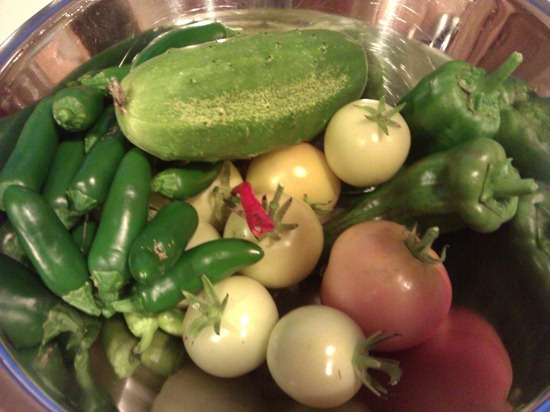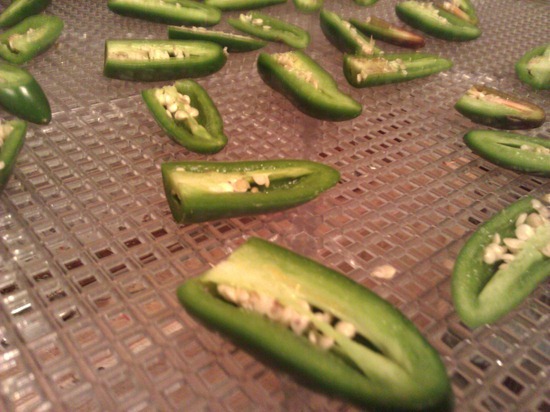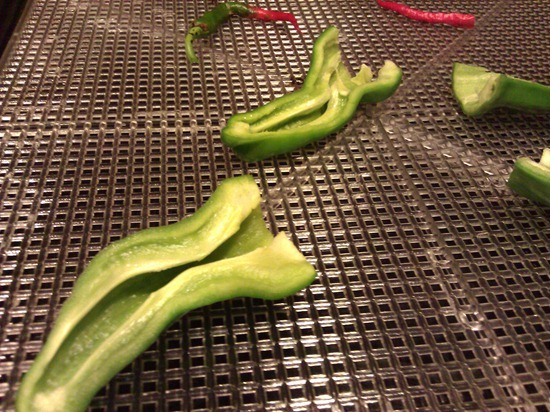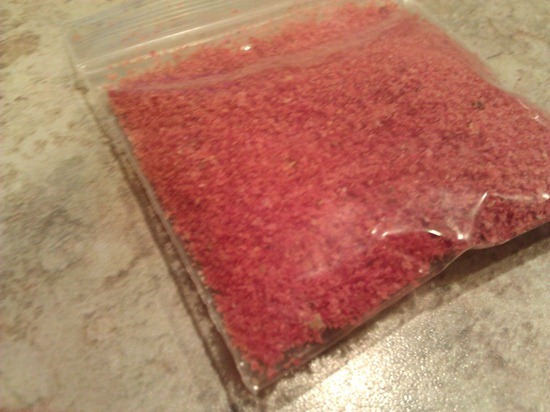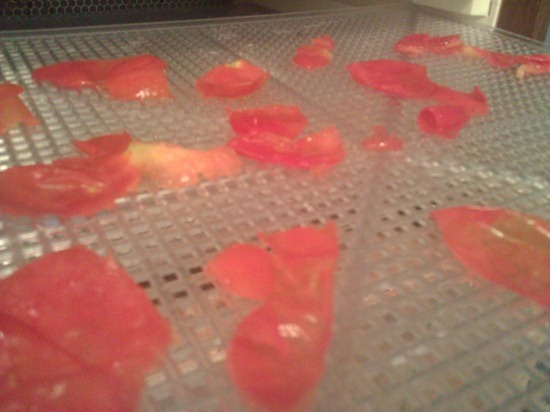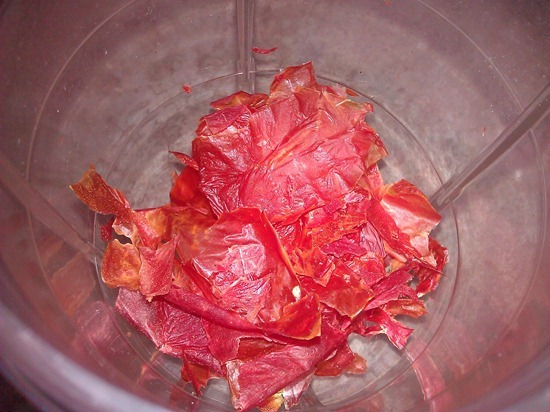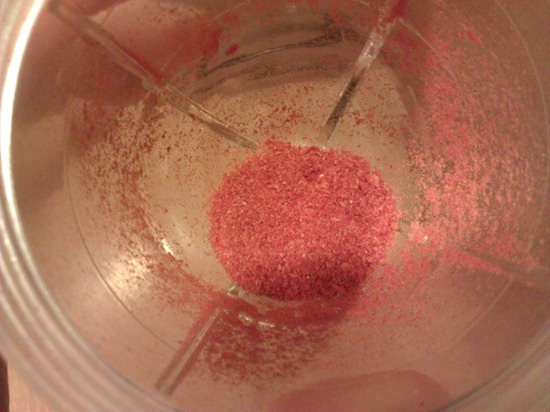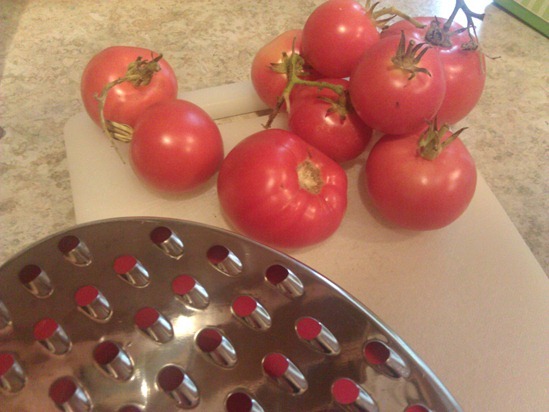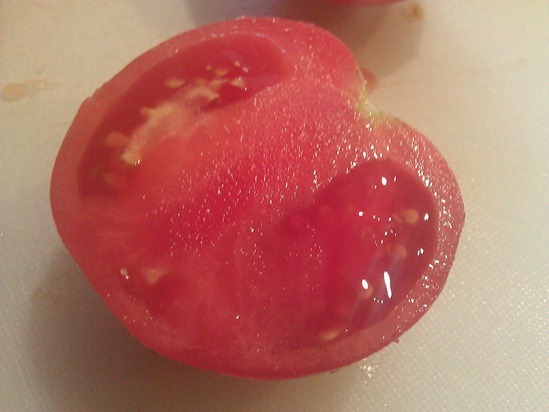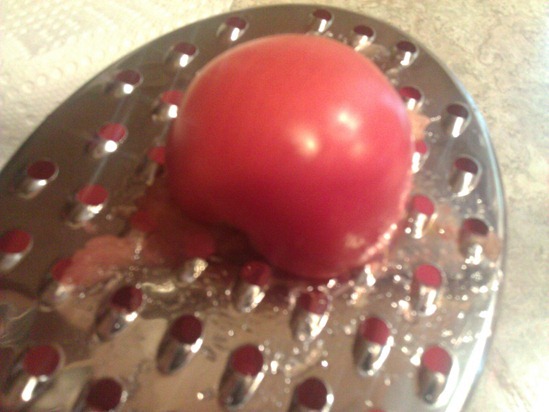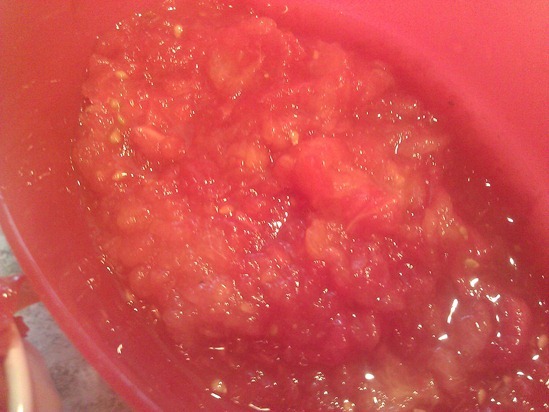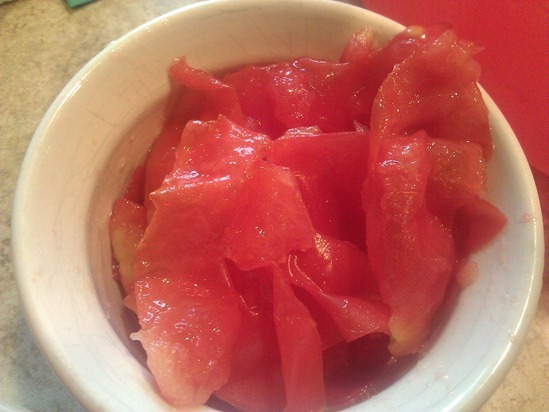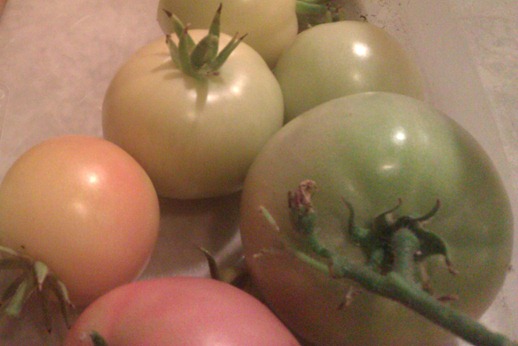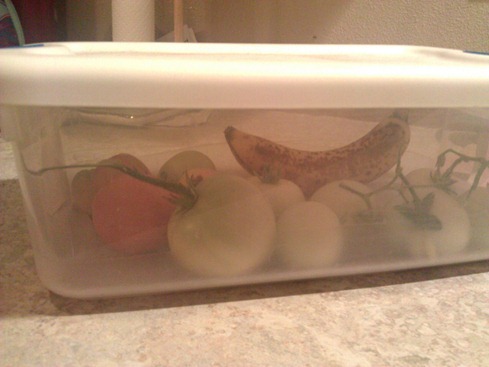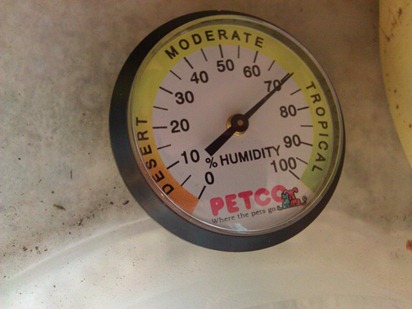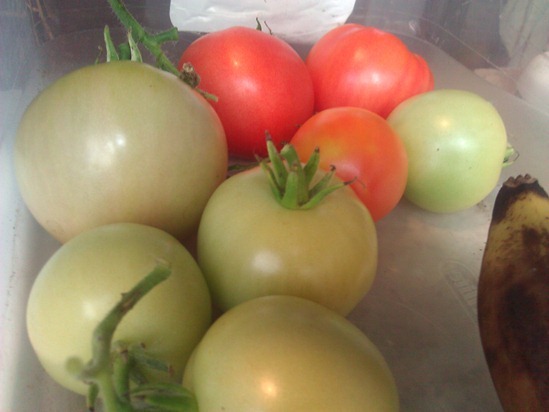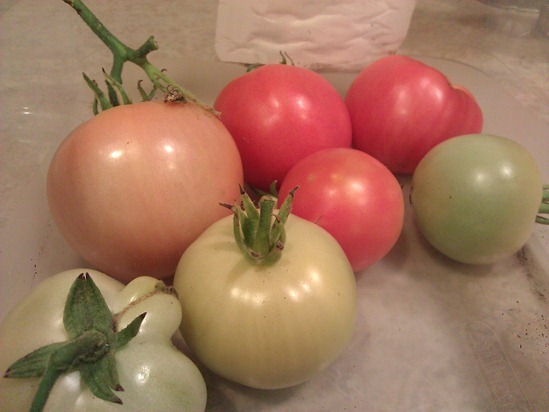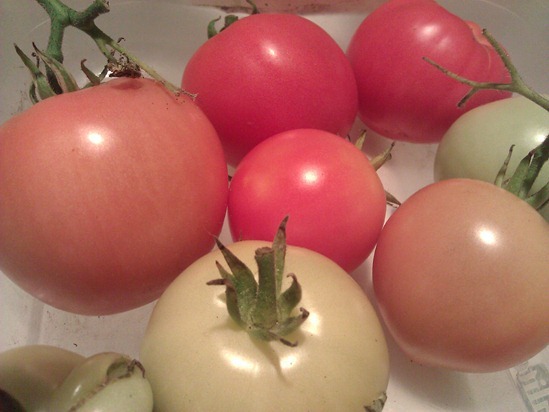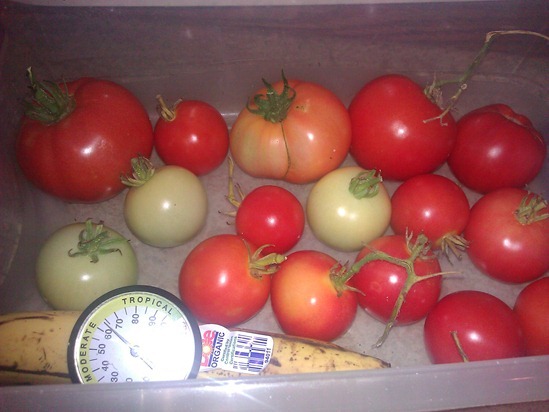How to make a pea trellis tower
11.1 years ago cheap, peas, planter, tomato, trellis
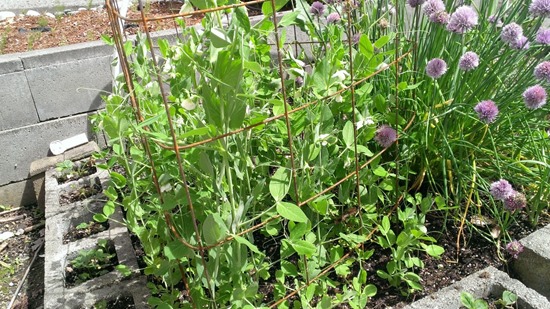
Long time readers know this is not the my first attempt at making a sturdy pea trellis I have had posts and posts about this in the past. Though those creations were a bit cheaper than my current version this one will not be falling down no matter how big those plants get.
First I started with a 4 foot by 8 foot cattle panel which ran me about $6 at Home Depot.

Given the panel had sharp edges and my largest vehicle is a pretty new minivan with leather seats I planned ahead and started the construction in the Home Depot parking lot. Taking a piece of scrap lumber I placed it on the 5th cross section on one side and bent it up until it was perpendicular to the ground then repeated with the other side.

The I carefully placed the bent panel into my minivan and brought it home for the remaining construction which pretty much was adding a zip tie in the middle to make a isosceles triangle and then tucked both ends to interweave with the other open side of the tower.

Next I used some pliers to not have as many sharp pointy parts for my kids…probably more likely me to poke myself with and also filed down any ends that seemed overly sharp.

So I had a bit of a strategy for planting the peas, to know where to plant I placed my tower in the desired spot and wiggles it around to make and outline to plant my peas. I removed it as you can see below and planted two rows of peas inside the perimeter. Then in a few weeks I will plant peas on the outside of the tower. The idea is the peas will grow and climb up the tower and have sunlight and adequate airflow to thrive. Then the second crop will start to grow but by the time it starts to disturb the inside crop they will already be harvested.

I also planted peas on the outside of the tower now on the northern facing side of the tower since it wouldn’t get much sunlight after the interior had a head start.

I know a few of you are probably thinking, “Wow this is awesome for peas, but I bet this would make an real sturdy tomato tower and way better than the ones I can buy in the garden center.” Which I would have to agree with you on that one large enough to provide good airflow and sturdy enough to support and fairly large tomato plant.

Growing tomatoes and getting to grips with the green tomatoes at the end of the year
12.5 years ago indoor seed starting, product review, sponsored post, tomato
October tends to see the first frosts in much of the UK and as tomato plants won’t survive a frost, gardeners growing tomatoes not lucky enough to have a heated greenhouse are struggling to get those stubbornly green tomatoes to ripen.

Figure 1 – The end of the growing tomatoes year – green unripen tomatoes
If you are wondering how to grow tomatoes so that they have the best chance of turning red you will be interested to know that temperature has a major impact on ripening. If your fruits are too cold they will not turn red. To give your tomatoes the best chance of ripening properly you should ensure your tomato plants are maintained at the correct temperature throughout the entire growing process. Tomato seeds need a temperature between 18°C and 22°C (68°F to 75°F) to germinate and tomato plants won’t survive below 10°C. It is also important to grow them somewhere where they are exposed to as much natural sunlight as possible to aid photosynthesis.
A Helpful introduction to tomato growing
Many growers make use of seed propagators such as the Greenhouse Sensation Vitopod to ensure their seeds are kept at the optimum temperature for germination. The Vitopod is particularly useful compared to traditional tomato pots in a basic propagator, because it is large enough to be used for hardening-off and protecting young tomato plants from late frosts. The shock of a late frost to a young tomato plant just out of a heated propagator can kill the plant, resulting in you having to start again.
Obviously greenhouses, polytunnels or even a conservatory are the ideal environment in which to keep your tomato plants warm but many people do grow outdoors, just make sure you choose a bright spot and be aware that they will take longer to ripen because of the cooler temperatures.
Even though October can be a particularly bountiful month and with aids such as the self-watering tomato pots such as the hydro grow system you can sometimes harvest fruit through to December providing that the plant is located in a heated location such as a greenhouse. The season is never long enough to ripen every single tomato you grow on the vine. Consequently no matter how particular you are with caring for your tomato plants it is inevitable that if you have produced a bumper crop you will end up with a lot of green fruit. If your vines are groaning with green tomatoes there are a couple of methods you can employ to encourage them to turn red:
One solution commonly advocated in gardening circles is harvesting the green tomatoes and placing them in close proximity to a banana. This works because ripening bananas give off ethylene — an odorless gaseous organic compound which also occurs naturally in tomatoes and catalyzes the ripening process.. Tomatoes produce their own ethylene once they have reached the mature green stage of their development but the process can be speeded-up by placing tomatoes near ripe bananas, the ethylene produced by the bananas stimulates the ripening process normally stimulated by the tomatoes own ethylene, this can be blown away if they are being grown in a windy environment.
How to get green tomatoes to ripen
One way of employing this method is by selecting three or four green or yellow tomatoes and placing them in a box with a banana which is starting to ripen. Ideally the banana should be at the stage where it is still green in places but turning yellow. This process will take one or two weeks so you may have to change the banana at some point. Alternatively you could just place a few tomatoes in a sunny spot near a bunch of bananas. Many growers use apples instead of bananas for this technique due to their abundance in British gardens (unlike bananas)!
Another way of encouraging your green tomatoes to turn red is by placing the fruit in a closed paper bag on its own. This traps the ethylene which the tomato produces itself and accelerates the ripening process. Simply place the fruit in a brown paper bag, folding the top over it twice to seal it. Regularly checking to see if the fruit is ripening is important to ensure that it doesn’t start to rot, especially in a humid environment such as a home.
If you are thinking of growing tomatoes at home the Greenhouse Sensation site has some excellent information about the varieties to grow, how and when to sow tomato seeds.
Late summer harvest
12.6 years ago cucumbers, jalapeno, peppers, summer, tomato
One of the good things about a cold summer is still getting harvests of summer vegetables now into October. Got another cucumber for summer fall pickles and some tomatoes I have ripening inside which this weekend I used to make some low carb pizzas.
One thing I was especially excited about was my jalapenos finally getting ready to be picked which I will dry and make jalapeno pepper powder which is an excellent addition to eggs in the morning and burgers in the evening providing the taste and kick of jalapenos without the texture and moisture.
I have also picked some green peppers which I will be drying out for my own variation of not so sweet paprika.
How to make tomato skin powder
Previously I have just thrown my tomatoes peels into the compost after peeling them, but fortunately I got wind of an awesome technique of repurposing these into some tomato peel powder. This is great when you want to create add some tomato flavor to a omelet or casserole without having to add the additional moisture raw tomatoes would include. As an added bonus these peels have awesome nutritional and health benefits:
Bioavailability of carotenoids from finely crushed peels homogenized in tomato paste appeared to be similar to lycopene from the tomato flesh. Such a peel enrichment of tomato products would be a means to increase the nutritional value of tomato pastes and to enhance the intake of carotenoids. 1
Step #1: Dry your tomato skins. If you don’t have a dehydrator you can dry them in the oven by setting it at its lowest temperature setting. For a bit slower drying process you can place a small fan in your dryer wedging the door open slightly and add a small desk fan to get some air circulating. For added heat place a ceramic reptile heater into the oven to get great results. Depending on the heat you are generating it should take about 12-24 hours for these skins to dehydrate and be brittle breaking (not flexing) when bent.
Step #2: Make some tomato powder. Place your dried tomato peels into a spice/coffee grinder. I personally went with my Magic Bullet with the grinder attachment. Grind until
Grind until until it becomes a fine powder.
You can store this powder for about 6 months in a airtight container, you can get more life out of these if you hold off grinding to just before use given oxidation can only occur where air is permeable so this will give you richer flavors longer. I enjoyed about 1/4 teaspoon of this powder on my omelet this morning and was a great flavor without the excess moisture raw tomatoes provide.
If you don’t have enough tomato peels to fill your needs for tomato powder, you can also do the same process on the flesh of the tomatoes by slicing thin and dehydrating and grinding in the same way.
Tags: tomato
Easiest way to peel a tomato
12.6 years ago peeling, tomato
If you have a lot of tomatoes to peel, I would recommend the classic method of quickly boiling and chilling the tomatoes. Though if you have just a few tomatoes and are making something like pizza sauce or making a little salsa here is the technique for you.
Step #1: Slice your tomatoes and remove seeds. Start by slicing your tomatoes down the middle and remove any seeds and membrane using a small spoon.
Step #2: Grate tomato. Use your standard cheese grater and shave off all the flesh. The skin should be thick enough to keep your fingers safe, but still be careful.
In the end you should have some nice grated tomato ready to make some tomato sauce or some fresh salsa with no chopping required.
All that is left if your tomato peels, but don’t throw them in your compost I have a post coming up with a great way to not waste these tasty part of your tomatoes.
Tags: tomato
How to ripen tomatoes indoors
With temperatures starting to drop and heavy rains on the way it has come time to start pulling some tomatoes to ripen indoors. Tomatoes need ethylene to ripen, this occurs naturally by the tomatoes plants releasing this during the later stages of growth thus causing the tomatoes to change color.
You can do this indoors with the by simply taking your tomatoes that are just beginning to blush and place them in a convenient container. Though you might get some ethylene from the stems remaining on the plants I also will add a ripe banana which also naturally releases ethylene which will assist to the ripening process.
I do this in a contraption I like to call my ethylene tomato gas chamber…
Ok, I know it is just plastic shoe box with a banana in it…this provides a portable area I can add my tomatoes as needed and also able to put a lid on it to contain the ethylene while also keeping fruit flies away from the nice ripening banana.
This technique gives the tomatoes adequate humidity not dry enough to create sundried tomatoes, but low enough to prevent the tomatoes from being too moist which would lead to rotting.
After just a couple days your riper tomatoes should be fully red and ready to eat, now these will not taste quite as good as the ones ripening on the vine, but little tastier than the ones you get in your local grocery store and you know exactly what was sprayed (or better yet…what wasn’t sprayed) on the plants.
Update (Day #2)
Update (Day #3)
Update (Day #4) Put in a new banana
Update (Day #7) Already ate a couple of tomatoes
